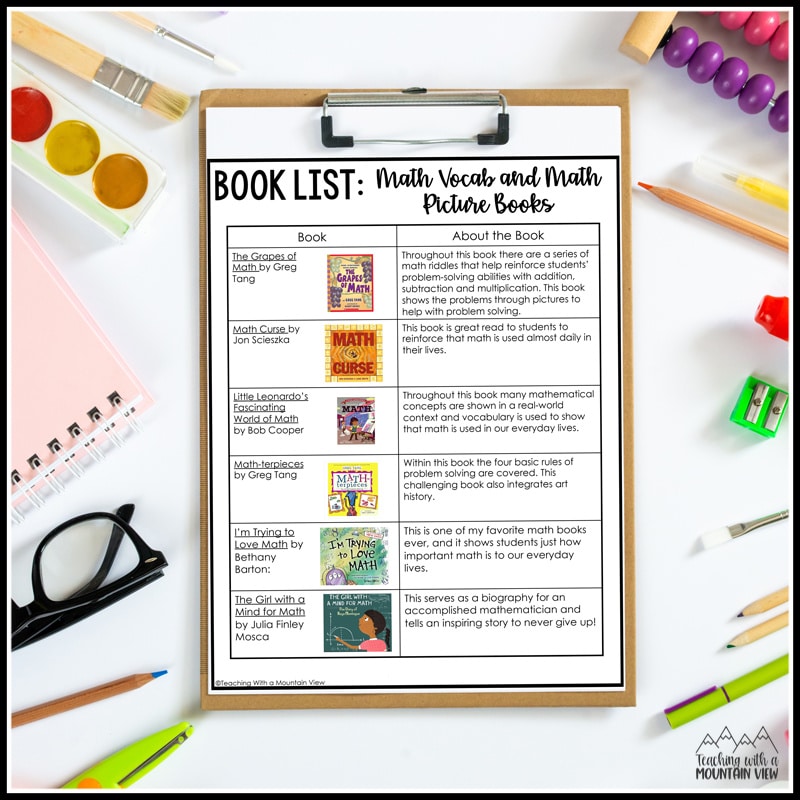The Complete Guide to Teaching Math Vocabulary
By Mary Montero
Share This Post:
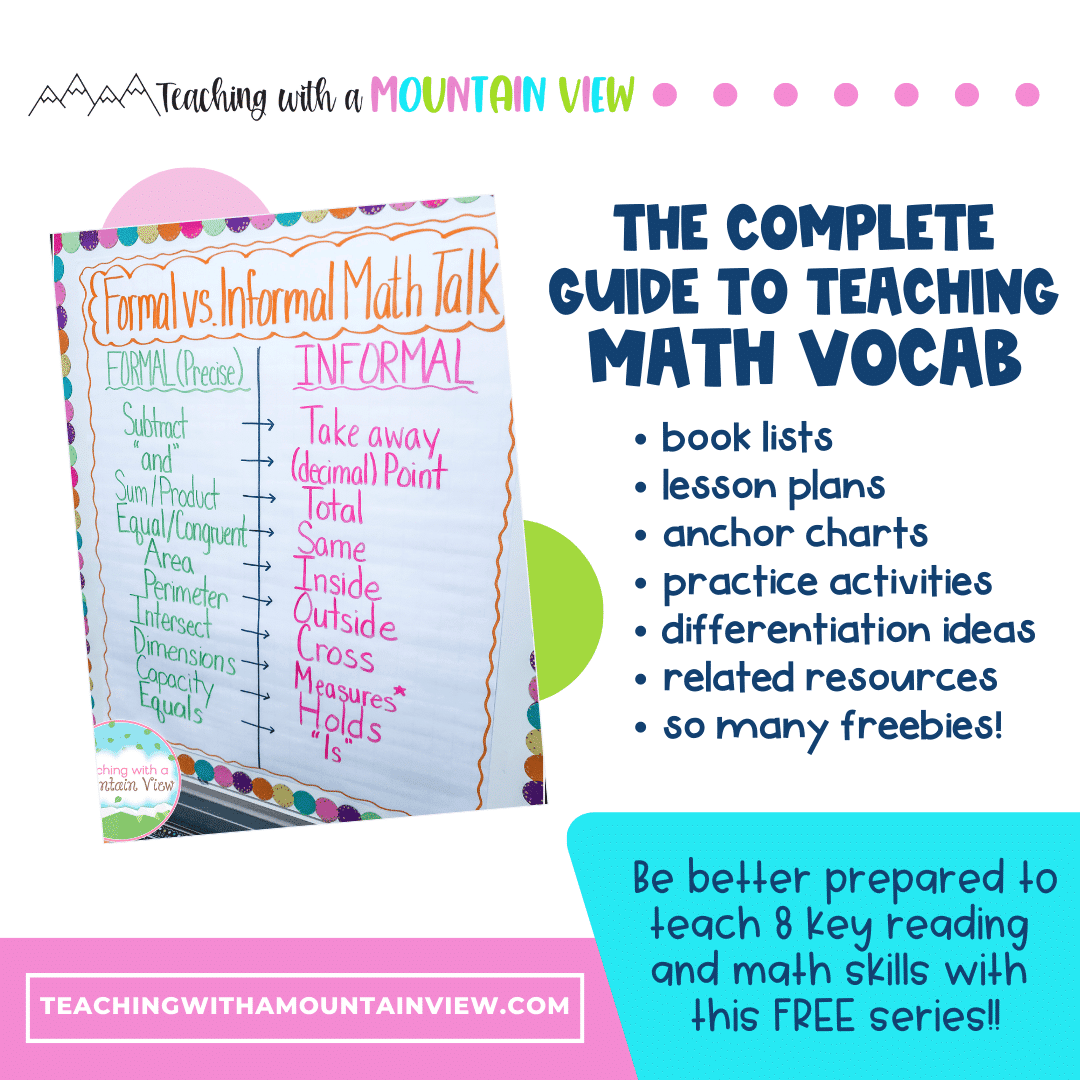
I am a firm believer that students in the upper grades can be expected to use precise math vocabulary. This means they know the difference between conceptual and computational errors, they fluently use words like “sum” and “product,” and they read decimals with tenths and hundreds instead of points. The more we can incorporate this seamlessly into our instruction and conversation, the more automatic it will become for students. Now, I never call out my students for using informal math vocabulary. However, just like we practice reading fluency, it’s important to me that we practice math fluency as well!
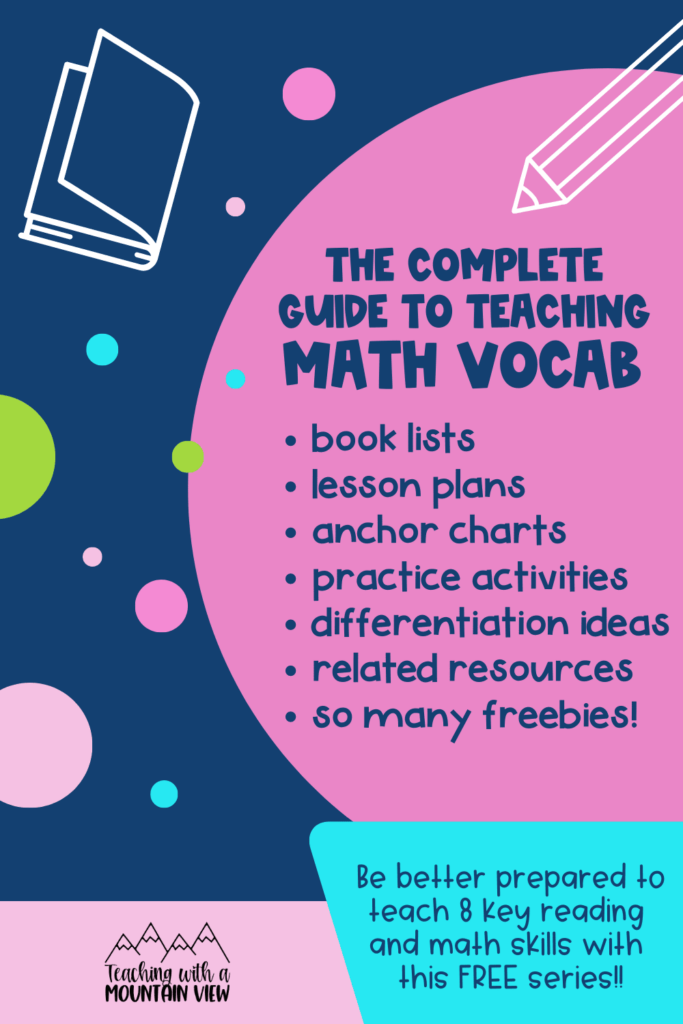
Download Everything You Need– for free!
This free PDF guide will allow you to have all of the math vocabulary resources right at your fingertips.
Why it’s important to use correct, precise math vocabulary:
- It increases student comprehension and ability to tackle math word problems
- It improves performance on standardized tests (which almost always use proper, precise math vocabulary)
- It gives every child a little knowledge boost as they progress through the grade levels
- It increases conceptual understanding of math concepts
A special note: Please note that I have used these strategies and expectations with all students, but students needing extra support or English Language Learners may need additional scaffolds, support, and accommodations. I never call out a student for using informal math vocabulary.
Important Math Vocabulary Lessons
I infuse proper math vocabulary into all of my lessons, but I do teach three explicit lessons on the skill.
Lesson #1: Expression vs. Equation
We dissect the words expression and equation. You’ll see in the anchor chart below that “Express” is underlined under Expression and “Equa” is underlined under Equation. Expressions are short, hence the “express” and “equa” is similar to equal. This helps my students remember the difference and infuses a bit of word study as well.
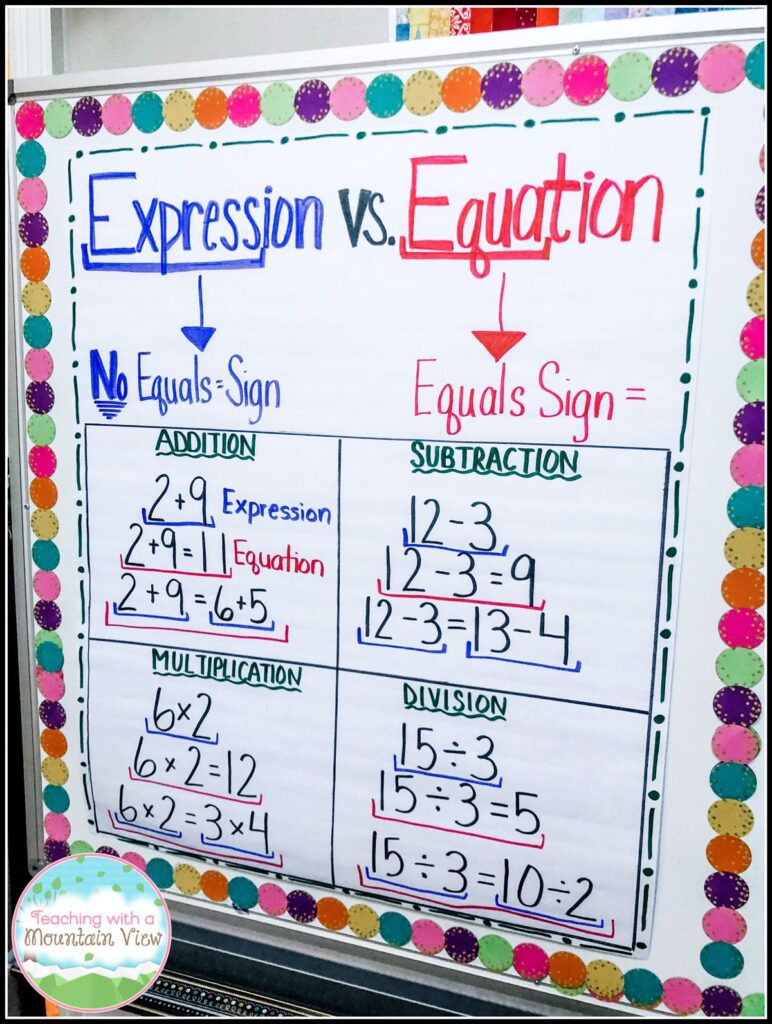
Lesson #2: Conceptual vs. Computational Understanding
I teach this lesson in relation to analyzing errors in your work, but it’s essential. When students have me check a piece of work, and I tell them it’s wrong, I will always tell them whether it’s computational or conceptual, which requires them to understand the difference between the two. If it’s computational, I typically don’t do a lot of reteaching. If it’s a conceptual error, I know I need to help them with the concept. This also makes them highly aware of their gaps in knowledge – there is a big difference between making computational mistakes and not understanding the concept. Don’t skip this lesson!
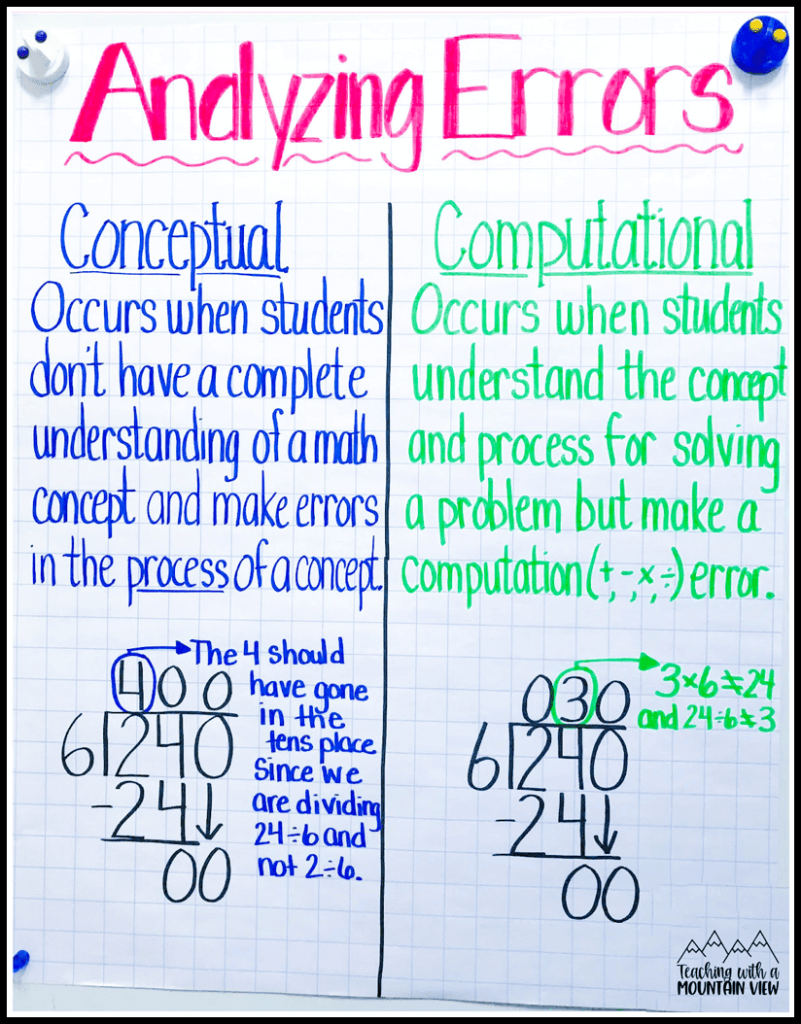
Lesson #3: Formal vs. Informal Math Talk
The upper grades, we do a fun little lesson about formal vs. informal math talk. We discuss that it’s perfectly fine to occasionally use informal math talk, but the more we use formal math talk, the more automatic it will become (just like informal math talk!). Here are the math topics I focus on the most:
- Operations: I constantly ask my students what OPERATION they used to solve the problem. When asking them about their answer, I’m always sure to ask “What the sum/difference/product/quotient.”
- Decimal Points: We read 2.34 as two and thirty-four hundredths, not two point three four
- Reading Whole numbers: We don’t use and when reading larger numbers, specifically because that’s how we read decimal numbers, and we don’t want to get in that habit early on.
- Reading Fractions: We refer to the top number as the numerator and the bottom number as the denominator.
- Greater than and Less Than: As students get older, they should fluently be able to read statements using <,>, and =
- Regroup and Decompose: It’s really hard to break the habit of saying “borrow,” but they aren’t borrowing numbers, they are regrouping them.
- Improper Fractions and Fractions Greater than One: This is newer, and one I still accidentally use sometimes!
- Reduced and Simplified Fractions: I use both terms interchangeable, BUT I make sure that students understand that we are not reducing the size of a fraction when we simplify.
- Geometry Terms: I’m a stickler for this one too – those aren’t corner. Those are vertices!
- Dimensions: Make it a point to teach this term and how to read dimensions. This is hugely important as students learn about area and perimeter (other terms you should always use).
- Digits vs. Numbers: This is akin to understanding that letters make up words. Digits make up numbers, and it’s important that students understand the difference.
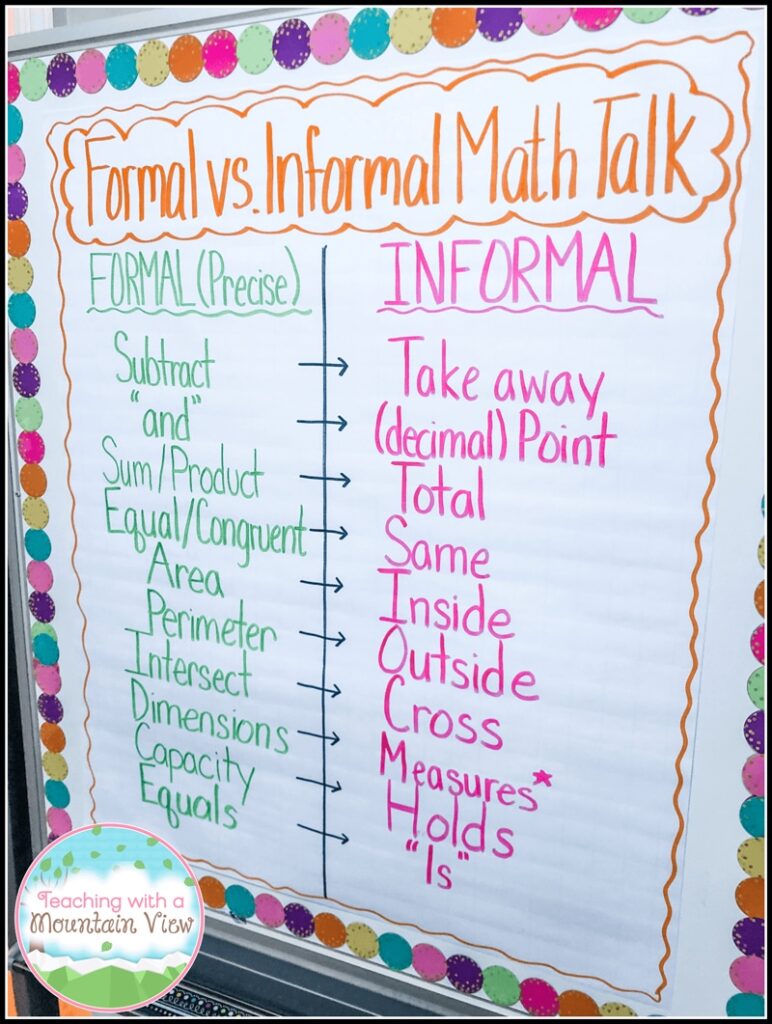
More Math Vocabulary Practice
The free PDF guide includes extra practice for 145 math vocabulary terms!
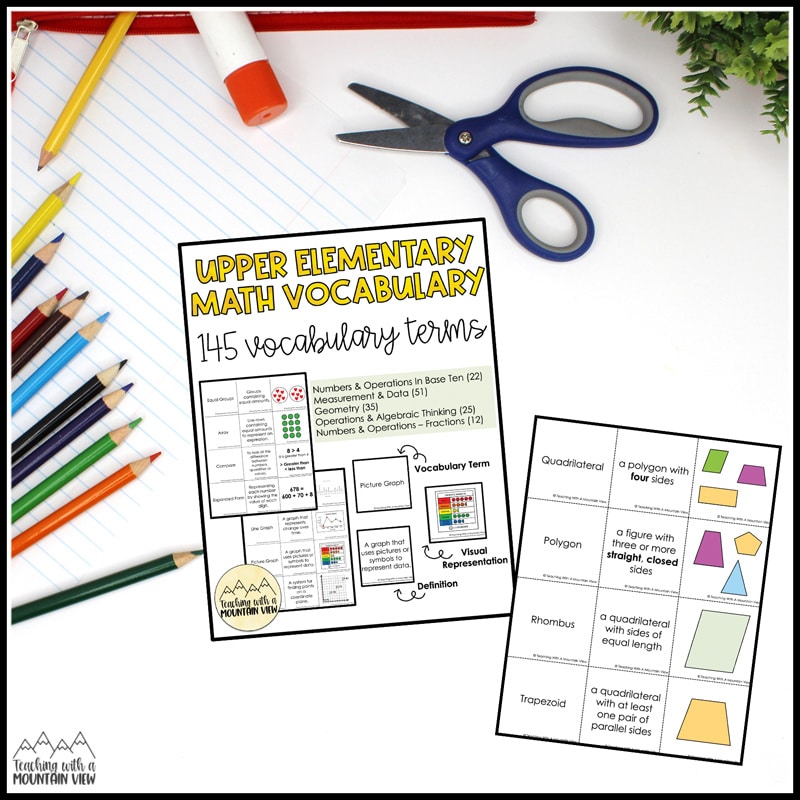
Excellent Books for Teaching Math Vocabulary and Skills
I created an Amazon Affiliate List of my favorite math picture books. The free PDF includes activity suggestions to use with some of the books to make teaching math vocabulary lessons easier!
Related Blog Posts
Related Resources
Mary Montero
I’m so glad you are here. I’m a current gifted and talented teacher in a small town in Colorado, and I’ve been in education since 2009. My passion (other than my family and cookies) is for making teachers’ lives easier and classrooms more engaging.







